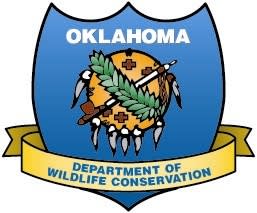Biologists Report Fluctuating Western Oklahoma Turkey Numbers

Turkey hunting season has brought with it some concerns about Rio Grande turkey populations in western Oklahoma. Many hunters have observed fewer birds to hunt than in previous years.
“Part of what makes this a tough year for many western Oklahoma turkey hunters is the lower number of adult toms in the population. Two-year-old birds normally make up the largest portion of adult toms that hunters so much enjoy pursuing,” said Rod Smith, southwest region supervisor for the Oklahoma Department of Wildlife Conservation.
Additionally, overall turkey population numbers are reduced from what many have experienced in the past few years. Western Oklahoma turkey populations were at an all-time high five years ago.
“In 2008 there were numerous reports from landowners that there were too many turkeys on their properties. Several years of abnormally good turkey reproduction led to those record numbers of turkeys. Following 2008, we experienced a couple of years of below normal reproduction, and in 2011 reproduction was characterized as dismal,” Smith said.
The redistribution of some flocks is also contributing to the change in turkey numbers observed in some areas. Roost sites in parts of southwest Oklahoma were damaged by the severe ice storm from two years ago and drought.
“Large cottonwoods are the primary roosting trees in much of the west, and many were either highly damaged or died from these natural but abnormal weather events,”
Smith said. “This change in roosting habitat resulted in both a dispersal of winter flocks and in some cases a shift in spring turkey flock distribution.”
Hunting season dates and bag limits are generally conservative and take into account expected changes in wildlife populations. Current regulations for western Oklahoma were in place before the upswing in population numbers observed in 2003-08.
“Considering where turkey populations are this year, season dates and bag limits are in line with sustaining healthy turkey populations. The Wildlife Department will continue to monitor turkey populations to assure our regulations remain in line with population numbers. Biologists will be especially watchful of the affects of lingering drought in much of our western regions,” Smith said.
To more closely monitor annual turkey harvest, the Wildlife Department may consider electronic checking of harvested birds in western Oklahoma. Checking birds west of I-35 is currently not required.
Veteran biologists and hunters observe that there is a normal ebb and flow in wildlife populations. When populations decline after years of unusually high abundance, it is normal to perceive the change as a population problem. While overall Rio Grande turkey numbers may not be at the high levels observed just a few years ago, they are still considered about average for the past decade or so.
“Although poor reproduction caused by extreme drought and heat in 2011 resulted in fewer than normal two-year-old birds this spring, many hunters are reporting good numbers of jakes (male birds hatched in 2012) but a general reduction in the number of adult birds,” Smith said. “With improved reproduction last year and the potential for a fair to good hatch this year, we may be well on the way back to the high numbers all turkey hunters’ desire.”
Turkey season in Oklahoma runs April 6 through May 6 in most of the state, excluding the far southeast counties where the season runs April 22 through May 6.
The wild turkey in Oklahoma has not always been prevalent. At one time the objective for turkey conservation was to restore decimated populations, but today there are huntable populations in all 77 Oklahoma counties. Hunters’ dollars and the efforts of groups like the National Wild Turkey Federation — which actively funds and supports turkey conservation in Oklahoma — partnered with efforts by the Wildlife Department has resulted in a very successful conservation story.
For complete regulations on turkey hunting in Oklahoma, including license requirements and season details, consult the current “Oklahoma Hunting Guide,” available on line at wildlifedepartment.com.

